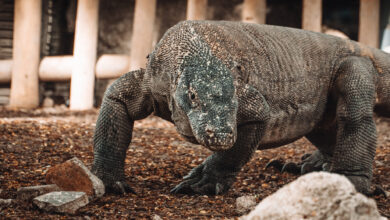15 Facts About The Great Barrier Reef
The Great Barrier Reef is one of the most beautiful and diverse natural wonders of the world. Located off the coast of Queensland, Australia. Here are some interesting facts about The Great Barrier Reef:
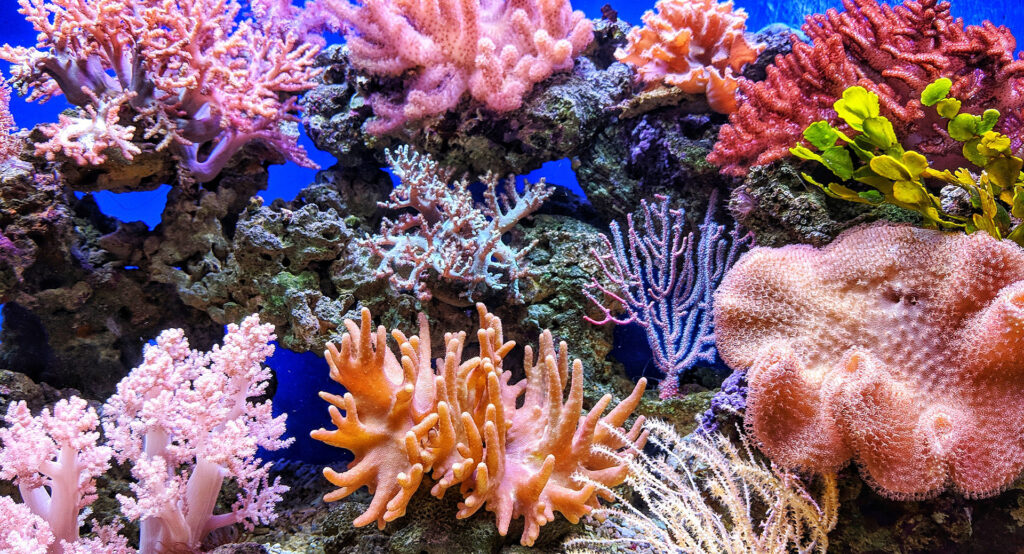
The Great Barrier Reef is the world’s largest coral reef system.
1 Covering an area of over 344,400 square kilometres and stretching over 2,900 individual reefs and 900 islands.
It is located in the Coral Sea, off the coast of Australia, and is home to thousands of species of marine life.
The reef is also an important economic resource for Australia, generating billions of dollars in revenue each year through industries such as tourism and fishing.
It is composed of over 2,900 individual reefs and 900 islands.
2 These reefs are made up of billions of tiny organisms called coral polyps, which secrete a hard skeleton made of calcium carbonate.
Over time, these skeletons accumulate and form the framework of the reef. The islands within the Great Barrier Reef are also an important part of the ecosystem, providing habitat for many species of plants and animals.
The Great Barrier Reef is home to thousands of species of marine life.
3 With thousands of species of fish, coral, mollusks, and other animals living within its waters. In fact, it is estimated that the reef supports around 1,500 species of fish and over 400 types of coral.
Other marine animals that call the Great Barrier Reef home include sea turtles, dolphins, sharks, and dugongs, among many others.
This rich diversity of life is one of the reasons why the Great Barrier Reef is considered to be one of the world’s most important natural wonders.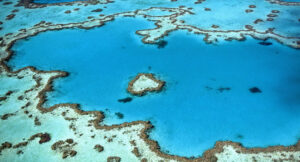
The reef is an important breeding ground for many species of marine animals.
4 The reef provides a safe and productive environment for the reproductive cycles of a wide range of marine species, including fish, turtles, sharks, and many others.
For example, green sea turtles come to the Great Barrier Reef to lay their eggs, while humpback whales use the area as a breeding and calving ground during their annual migration.
Protecting these important breeding grounds is crucial for the survival of many species and the long-term health of the reef ecosystem.
The Great Barrier Reef is a UNESCO World Heritage Site and is protected by the Australian government.
5 It was designated a World Heritage Site in 1981 in recognition of its outstanding natural beauty and ecological importance.
The Australian government has implemented a number of measures to protect the reef, including the creation of the Great Barrier Reef Marine Park, which is one of the largest protected marine areas in the world.
The park is managed by the Great Barrier Reef Marine Park Authority, which works to ensure the sustainable use and protection of the reef.
However, despite these protections, the reef faces a number of threats, including climate change, pollution, and overfishing, which are putting the reef’s long-term health and survival at risk.
The reef is under threat from climate change, pollution, and overfishing, among other factors.
6 Climate change is perhaps the most significant threat, as rising sea temperatures and ocean acidification are causing coral bleaching and the death of large sections of the reef. Pollution from agricultural runoff, coastal development, and shipping also poses a major threat, as it can harm marine life and contribute to the growth of harmful algal blooms.
Overfishing is another issue, as it can disrupt the delicate balance of the reef ecosystem and lead to the depletion of fish populations.
These threats are putting the long-term health and survival of the Great Barrier Reef at risk, highlighting the need for continued conservation and management efforts to protect this important natural wonder.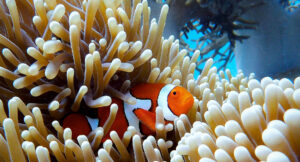
The Great Barrier Reef was formed over millions of years by the accumulation of coral skeletons on top of older reefs.
7 The reef began to form around 20 million years ago, when the sea level rose and flooded the shallow seas around what is now Australia.
Over time, the coral polyps that make up the reef built up layer upon layer of their calcium carbonate skeletons, forming the complex and diverse ecosystem we see today.
This process is ongoing, as new coral continues to grow and replace the old, contributing to the growth and evolution of the reef.
The Great Barrier Reef is a testament to the incredible natural processes that shape our planet over long periods of time.
The Great Barrier Reef was first explored by Europeans in 1770.
8 When British navigator Captain James Cook sailed the HMS Endeavour along the eastern coast of Australia.
Cook encountered the reef on June 11, 1770, when his ship ran aground on a section of the reef that is now known as Endeavour Reef.
The incident caused significant damage to the ship, and Cook and his crew were forced to beach the vessel for repairs in what is now known as Cooktown.
Cook’s exploration of the Great Barrier Reef marked the beginning of a long history of human interaction with the reef, including fishing, tourism, and scientific study.
The Great Barrier Reef is one of the world’s most popular tourist destinations, attracting millions of visitors every year.
9 The reef offers a range of activities for tourists, including snorkeling, scuba diving, and boat tours, allowing visitors to experience the incredible beauty and diversity of the reef firsthand.
However, tourism can also have negative impacts on the reef, such as physical damage from boats and divers, pollution from tourist activities, and disturbance of marine life.
As a result, it is important that tourism in the Great Barrier Reef is managed in a sustainable and responsible way to minimize these impacts and ensure the long-term health and survival of this important natural wonder.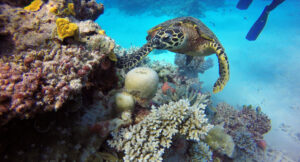
The Great Barrier Reef Marine Park Authority is responsible for managing and protecting the reef.
10 The Great Barrier Reef Marine Park Authority (GBRMPA) is the Australian government agency responsible for managing and protecting the Great Barrier Reef Marine Park, which covers an area of over 344,000 square kilometers.
The GBRMPA’s role is to ensure that the reef is protected and managed in a sustainable way that balances the needs of the environment, industry, and the community.
The agency works with a range of stakeholders, including scientists, traditional owners, tourism operators, and local communities, to develop and implement management plans and strategies that help to protect the reef from threats such as climate change, pollution, and overfishing.
The GBRMPA also plays a key role in monitoring the health of the reef and conducting research to better understand the complex ecosystems that make up this incredible natural wonder.
The Great Barrier Reef is not a single continuous structure.
11 But rather a vast and complex system of individual reefs, shoals, and islands that are interconnected in a network stretching over 2,300 kilometers along the northeastern coast of Australia.
The reef system is divided into three main regions: the northern, central, and southern sections. Within each of these regions, there are hundreds of individual reefs, many of which are separated by deep channels or lagoons.
The diversity and complexity of the reef system are what make it such an important and unique natural wonder, as it supports an incredible array of marine life and ecosystems.
However, this complexity also means that managing and protecting the reef is a complex and challenging task that requires ongoing research, monitoring, and management efforts.
The vibrant colours of the Great Barrier Reef are the result of a symbiotic relationship between the coral and tiny algae called zooxanthellae.
12 These algae live inside the coral polyps and provide them with energy through photosynthesis. In return, the coral provides the algae with shelter and nutrients.
The pigments in the algae give the coral its bright colors, which range from vibrant blues and greens to deep purples and reds. However, this relationship is delicate and can be disrupted by factors such as pollution, rising water temperatures, and ocean acidification, which can cause the coral to expel the algae and turn white in a process known as coral bleaching.
Coral bleaching is a serious threat to the health of the reef, as it can lead to widespread coral death and the loss of the vibrant colours that make the Great Barrier Reef such a unique and beautiful natural wonder.
The Great Barrier Reef has a rich cultural history.
13 The Great Barrier Reef has been an important part of the culture and traditions of the Aboriginal and Torres Strait Islander peoples of Australia for thousands of years.
The reef and its surrounding waters are home to a rich array of cultural sites, including rock art, burial sites, and fishing grounds, which are sacred to the Indigenous peoples of the region.
These sites reflect the deep spiritual and cultural connection that Indigenous peoples have to the reef and the surrounding landscape, and their traditional knowledge and practices continue to play an important role in the management and conservation of the reef today.
The Great Barrier Reef Marine Park Authority works closely with Indigenous groups to ensure that their cultural heritage is respected and protected, and that their traditional knowledge and practices are incorporated into the management and conservation of the reef.
The Great Barrier Reef is an important economic resource for Australia.
14 Generating billions of dollars in revenue each year from tourism, fishing, and other industries. The reef is a major tourist destination, attracting millions of visitors from around the world and contributing billions of dollars to the Australian economy.
It is also an important fishing ground, providing a range of commercially valuable fish and seafood species that support the livelihoods of many coastal communities.
In addition, the reef is a source of inspiration and wonder for people around the world, and its beauty and uniqueness have helped to establish Australia as a global leader in marine conservation and environmental stewardship.
However, the economic benefits of the reef must be balanced against the need to protect and preserve this fragile and vulnerable ecosystem for future generations.
Sustainable management and conservation efforts are crucial to ensuring the long-term health and vitality of the reef, and to ensuring that it continues to support the economy and the well-being of communities across the region.
The Great Barrier Reef has been the subject of many scientific studies.
15 Researchers from around the world have been studying the reef for decades to better understand its ecology, biology, and geology.
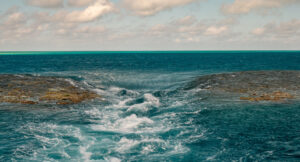 The reef is an incredibly complex and diverse ecosystem, and researchers have been working to unravel its many mysteries and to better understand the threats that it faces from climate change, pollution, and other human activities.
The reef is an incredibly complex and diverse ecosystem, and researchers have been working to unravel its many mysteries and to better understand the threats that it faces from climate change, pollution, and other human activities.
Studies have focused on a range of topics, including the diversity and abundance of marine life on the reef, the ecological processes that shape the reef ecosystem, the impacts of climate change and ocean acidification on the reef, and the effectiveness of management and conservation efforts.
The Great Barrier Reef is a critical natural laboratory for studying the impacts of global environmental change on coral reefs and other marine ecosystems, and the research conducted on the reef has important implications for the future of these ecosystems around the world.




